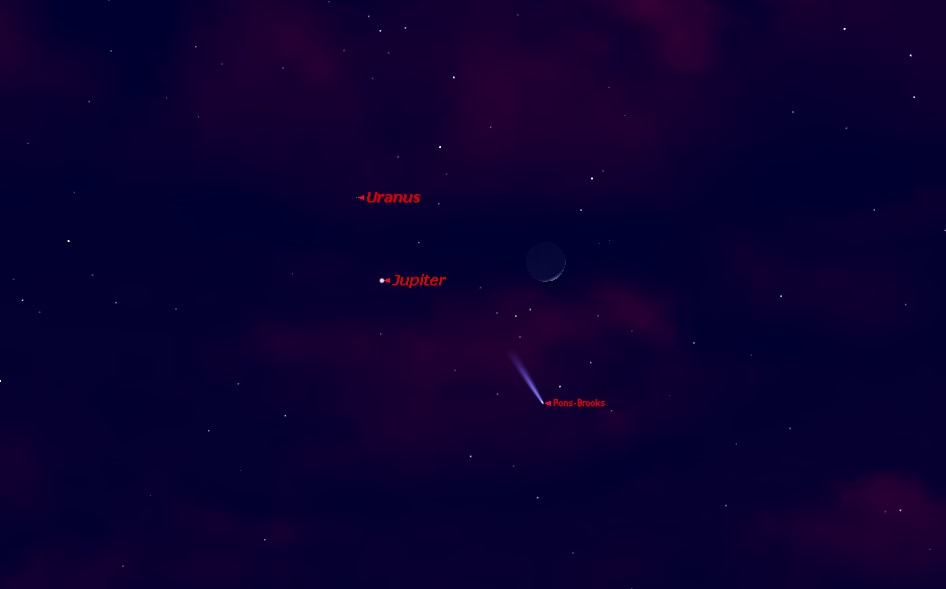In April 2024, Mercury and Neptune will be less than 15° from the Sun from the point of view of ground observers, so it will be almost impossible to see them in our latitudes. Accordingly, the Moon‘s conjunctions with these planets are also inaccessible to observers. The situation with Venus is not much better, which on April 3 will pass less than 3° from Neptune and will continue to approach our luminary. Without the help of optical devices, it will not be visible for a long time now. In this respect, only those who find themselves in the band of the total phase of the solar eclipse on April 8 will be lucky, but it runs only through the territory of North America.

The other two planets visible in the morning sky have already moved more than 30° away from the Sun. We are talking about Mars and Saturn. Before dawn on April 6, the crescent moon will be about 3° south of the first of them and almost 5° from the second.
After the solar eclipse, our natural moon will “crawl” into the evening sky and arrange a rare “triple conjunction” on April 10. Initially, it will approach 1.5° to the Pons-Brooks comet, then pass 3° north of Jupiter, and just before its approach it will come 4° to Uranus.

In the future, until the beginning of May, the Moon will not participate in any planetary conjunctions, but on the morning of April 11, we will be able to see how Mars will pass half a degree north of Saturn. Both planets will be located 37° west of the Sun. And on April 13, comet Pons-Brooks will fly 3° west of Jupiter. In space, they will be separated by 4,283 AU (641 million km).
Finally, on April 20-21, Jupiter will pass a little more than 0.5° from Uranus, the most distant planet visible to the naked eye. The brilliance of these two celestial bodies will differ by almost 1400 times (the corresponding indicator of Jupiter will be -2.0ᵐ, Uranus 5.8ᵐ), and the true distance between them will exceed 14.6 AU, or 2 billion 184 million km. This conjunction will occur almost 21° from the Sun and will be clearly visible in our latitudes due to the fact that the ecliptic is located at a large angle to the horizon on spring evenings.
Follow us on Twitter to get the most interesting space news in time
https://twitter.com/ust_magazine


